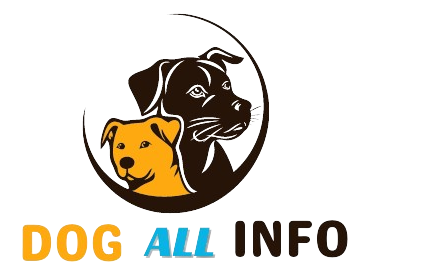A dog should eat 2-3% of its ideal body weight in fresh meat daily. Adjust based on activity level and breed.
Feeding your dog fresh meat is beneficial for their health. Fresh meat provides essential nutrients and supports muscle development. Calculate the daily portion based on your dog’s weight. For example, a 50-pound dog should eat 1-1. 5 pounds of fresh meat daily.
Monitor your dog’s weight and adjust portions accordingly. Active dogs may require more, while less active dogs need less. Always consult your vet to ensure a balanced diet. Fresh meat should complement other nutritional needs, including vitamins and minerals. A proper diet ensures your dog stays healthy and energetic.
Introduction To Fresh Meat Feeding
Feeding your dog fresh meat can offer numerous benefits. It provides natural nutrients and improves overall health. Understanding how much fresh meat to feed a dog is crucial. This guide will help you make informed decisions.
Benefits Of Fresh Meat
- Improved Digestion: Fresh meat is easier for dogs to digest.
- Better Skin and Coat: Fresh meat contains essential oils for a shiny coat.
- Increased Energy: Fresh meat provides high-quality protein for energy.
- Stronger Immune System: Fresh meat is rich in vitamins and minerals.
Common Misconceptions
- Too Expensive: Many think fresh meat is costly. It’s affordable with planning.
- Hard to Prepare: Fresh meat is simple to prepare with the right guidance.
- Unsafe for Dogs: Fresh meat is safe when sourced from reputable suppliers.
- Causes Aggression: There is no evidence that fresh meat causes aggression in dogs.
Here’s a simple table to help you determine the right amount of fresh meat:
| Dog Weight | Daily Fresh Meat |
|---|---|
| 10 lbs | 1/4 lb |
| 20 lbs | 1/2 lb |
| 50 lbs | 1 1/4 lbs |
| 100 lbs | 2 1/2 lbs |
Determining The Right Amount
Feeding your dog the right amount of fresh meat is crucial. It ensures they stay healthy and strong. This section will help you understand how to determine the right amount.
Factors To Consider
Several factors influence how much fresh meat your dog needs. These include:
- Weight – Larger dogs need more food.
- Activity Level – Active dogs burn more calories.
- Age – Puppies and older dogs have different needs.
- Health – Some dogs have special dietary needs.
Weight And Activity Level
To determine the right amount, start with your dog’s weight. Here’s a simple table to guide you:
| Dog Weight (lbs) | Meat per Day (oz) |
|---|---|
| 10 | 4 |
| 20 | 8 |
| 30 | 12 |
| 40 | 16 |
Next, consider your dog’s activity level. An active dog needs more food:
- Low Activity: 2% of body weight.
- Moderate Activity: 2.5% of body weight.
- High Activity: 3% of body weight.
Combine both factors to find the perfect amount for your dog. Always adjust based on your dog’s health and energy levels.
Types Of Fresh Meat
Feeding your dog fresh meat can greatly benefit its health. Different types of fresh meat offer various nutrients and flavors. Let’s explore some common types of fresh meat for dogs.
Beef And Chicken
Beef is a favorite among many dogs. It’s rich in protein and iron. Protein helps build strong muscles. Iron supports healthy blood cells. Beef is also full of essential vitamins like B12. Always choose lean cuts to avoid excess fat.
Chicken is another popular choice. It is easy to digest and low in fat. Chicken provides a good amount of protein. It also contains essential amino acids. These help in maintaining healthy tissues. Make sure to remove bones before serving chicken.
Fish And Organ Meats
Fish is an excellent source of omega-3 fatty acids. These support a healthy coat and skin. Fish also provides high-quality protein and essential nutrients. Common options include salmon, mackerel, and sardines. Always cook fish to kill any harmful bacteria.
Organ meats like liver, kidney, and heart are nutrient-dense. They offer a good source of vitamins and minerals. Liver is rich in vitamin A and iron. Kidney provides vitamins A, B, and E. Heart meat is full of taurine, which supports heart health. Feed organ meats in moderation to avoid nutrient imbalances.
| Type of Meat | Key Nutrients | Benefits |
|---|---|---|
| Beef | Protein, Iron, B12 | Strong muscles, healthy blood cells |
| Chicken | Protein, Amino Acids | Easy digestion, healthy tissues |
| Fish | Omega-3, Protein | Healthy coat, skin, high-quality protein |
| Organ Meats | Vitamin A, Iron, Taurine | Heart health, rich in vitamins |
Choose the right fresh meat for your dog’s needs. Ensure a balanced diet for optimal health.
Balancing The Diet
Feeding your dog the right amount of fresh meat is essential for their health. Balancing the diet ensures they get all the nutrients they need. Let’s explore how to achieve this balance.
Nutritional Needs
Dogs need a variety of nutrients to stay healthy. Fresh meat provides high-quality protein that supports muscle growth and repair. But it’s important to include other nutrients as well.
| Nutrient | Importance |
|---|---|
| Protein | Supports muscle and tissue health |
| Fats | Provide energy and support skin health |
| Vitamins | Boost immune system and overall health |
| Minerals | Support bone and teeth health |
Supplementing With Vegetables
Vegetables add essential nutrients to your dog’s diet. They offer vitamins, minerals, and fiber. Fiber helps with digestion and keeps your dog feeling full.
- Carrots: Rich in vitamin A, good for vision.
- Spinach: High in iron and vitamins.
- Sweet Potatoes: Provide fiber and vitamins.
- Green Beans: Low in calories, high in fiber.
Ensure you introduce vegetables gradually. Observe any changes in your dog’s digestion. Always consult your vet before making significant diet changes.
Transitioning To Fresh Meat
Switching your dog’s diet to fresh meat can improve their health. But it must be done carefully. This section will guide you on how to transition. Follow these steps to ensure a smooth change.
Gradual Introduction
Start by mixing fresh meat with your dog’s regular food. Begin with a small amount. Gradually increase the meat portion over several days.
Here’s a suggested plan:
| Days | Fresh Meat | Regular Food |
|---|---|---|
| 1-3 | 25% | 75% |
| 4-6 | 50% | 50% |
| 7-9 | 75% | 25% |
| 10+ | 100% | 0% |
Monitoring Health
Watch your dog for any health changes. Look for signs of allergies or digestive issues. Pay attention to their stool quality.
Key things to monitor:
- Energy levels: Your dog should stay active and playful.
- Coat condition: A shiny coat indicates good health.
- Weight: Maintain a healthy weight for your dog.
- Appetite: Ensure your dog eats well and enjoys the food.
If you notice any issues, consult your vet. They can provide guidance and adjustments.
Feeding Schedules
Establishing a consistent feeding schedule is crucial for your dog’s health. Proper feeding schedules help maintain energy levels and prevent obesity.
Meal Frequency
Dogs thrive on routine, so feed them at the same times each day. Puppies need more frequent meals than adult dogs. Here’s a general guideline:
- Puppies (up to 6 months): 3-4 meals per day
- Young dogs (6-12 months): 2-3 meals per day
- Adult dogs (1 year and older): 2 meals per day
Consistent meal times help with digestion and behavior. Avoid free-feeding, where food is available all day.
Portion Control
Portion control ensures your dog gets the right amount of nutrients. Overfeeding can lead to obesity and health issues.
Use the following table to determine portion sizes based on your dog’s weight:
| Dog’s Weight | Daily Meat Intake |
|---|---|
| Up to 10 lbs | 1/4 – 1/2 lb |
| 10 – 30 lbs | 1/2 – 1 lb |
| 30 – 60 lbs | 1 – 1.5 lbs |
| 60 – 90 lbs | 1.5 – 2 lbs |
| Over 90 lbs | 2 – 3 lbs |
Adjust portions based on your dog’s activity level and age. Always consult your vet for personalized advice.
Using a kitchen scale helps with accurate portion control. Pre-measure meals to ensure consistency.
Common Feeding Mistakes
Feeding your dog the right amount of fresh meat is crucial. Mistakes in feeding can lead to health issues. Let’s explore some common errors dog owners make.
Overfeeding Risks
Overfeeding your dog can cause weight gain. This leads to obesity. Obesity can cause joint problems and heart issues. It also reduces your dog’s life span.
Use a feeding chart to determine the right amount. Adjust the portions based on your dog’s weight and activity level. Here’s a simple table to guide you:
| Dog Weight (lbs) | Daily Meat Intake (oz) |
|---|---|
| 10-20 | 4-6 |
| 20-40 | 8-12 |
| 40-60 | 12-16 |
| 60+ | 16-20 |
Avoiding Toxic Foods
Some foods are toxic to dogs. Avoid these at all costs. Common toxic foods include:
- Chocolate
- Grapes and raisins
- Onions and garlic
- Avocado
- Macadamia nuts
Always check if a food is safe before feeding it to your dog. Toxic foods can cause severe health problems or even death.
Stick to a diet of fresh meat and safe vegetables. Keep your dog healthy and happy by avoiding these common feeding mistakes.
Consulting A Veterinarian
Feeding your dog the right amount of fresh meat is crucial. Consulting a veterinarian ensures your dog gets the best nutrition. A vet can provide tailored advice based on your dog’s needs.
Tailored Feeding Plans
Every dog is unique. A one-size-fits-all feeding plan won’t work. A veterinarian can create a tailored feeding plan for your dog. This plan considers your dog’s age, breed, size, and health. Here’s a sample plan:
| Dog Size | Daily Meat Amount |
|---|---|
| Small | 1/4 to 1/2 pound |
| Medium | 1/2 to 1 pound |
| Large | 1 to 2 pounds |
This table is just a guide. Always follow your vet’s advice.
Regular Check-ups
Regular vet check-ups are essential. They help monitor your dog’s health and weight. During check-ups, the vet can adjust the feeding plan. This ensures your dog stays healthy and happy.
- Monthly Check-Ups: For puppies and senior dogs.
- Quarterly Check-Ups: For adult dogs.
These check-ups can catch any health issues early. Early detection makes treatment easier. Always keep up with regular vet visits.
Another Post: Can Dogs Have Sardines in Olive Oil
FAQ
How Much Fresh Meat Should I Feed My Dog?
Feed your dog 2-3% of their body weight in fresh meat daily.
Can Dogs Eat Raw Meat Safely?
Yes, dogs can eat raw meat. Ensure it’s fresh and from a reputable source to avoid pathogens.
Is Cooked Meat Better Than Raw Meat For Dogs?
Both raw and cooked meats are beneficial. Raw meat retains more nutrients, while cooked meat is easier to digest.
Conclusion
Feeding the right amount of fresh meat keeps your dog healthy and happy. Always consider your dog’s weight and activity level. Consult your vet for personalized advice. Proper nutrition is key for your dog’s well-being. Adjust portions as needed to maintain a balanced diet.
Your furry friend deserves the best!

